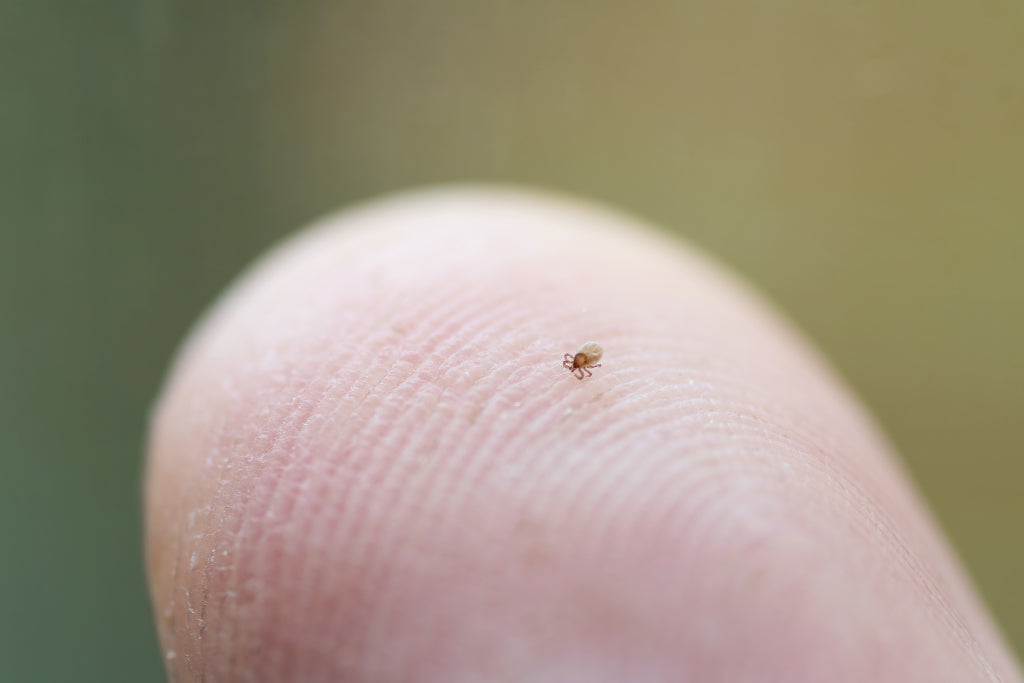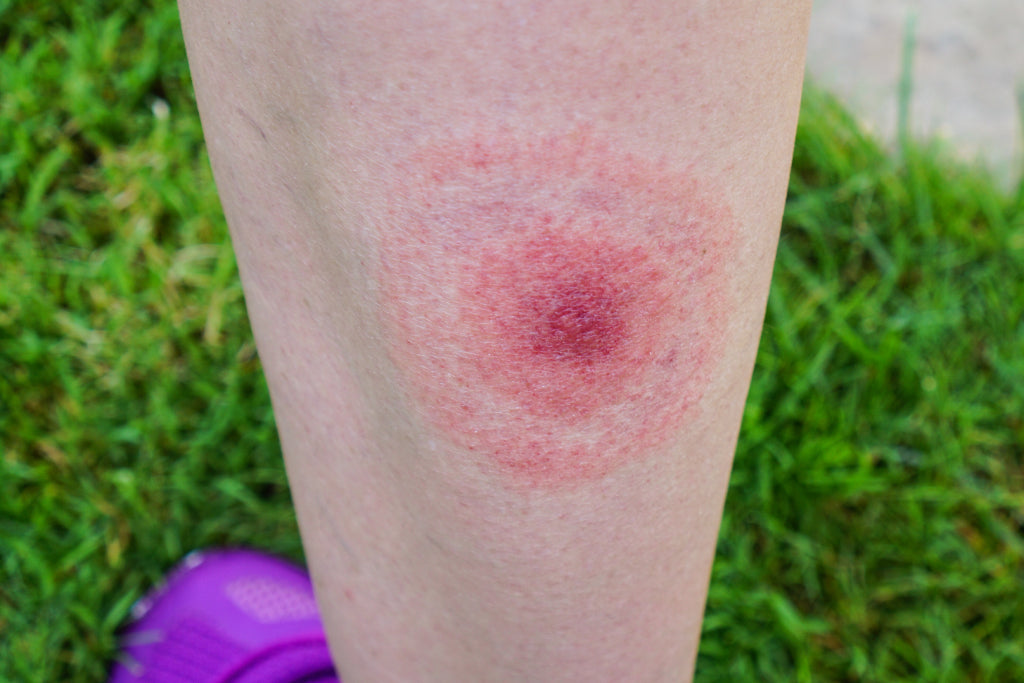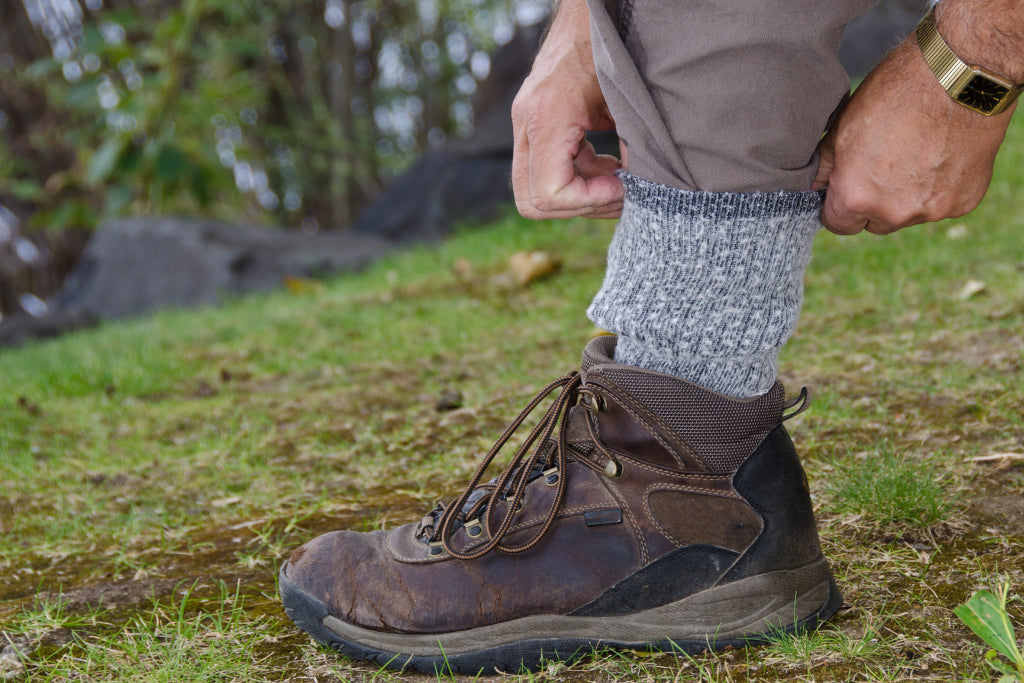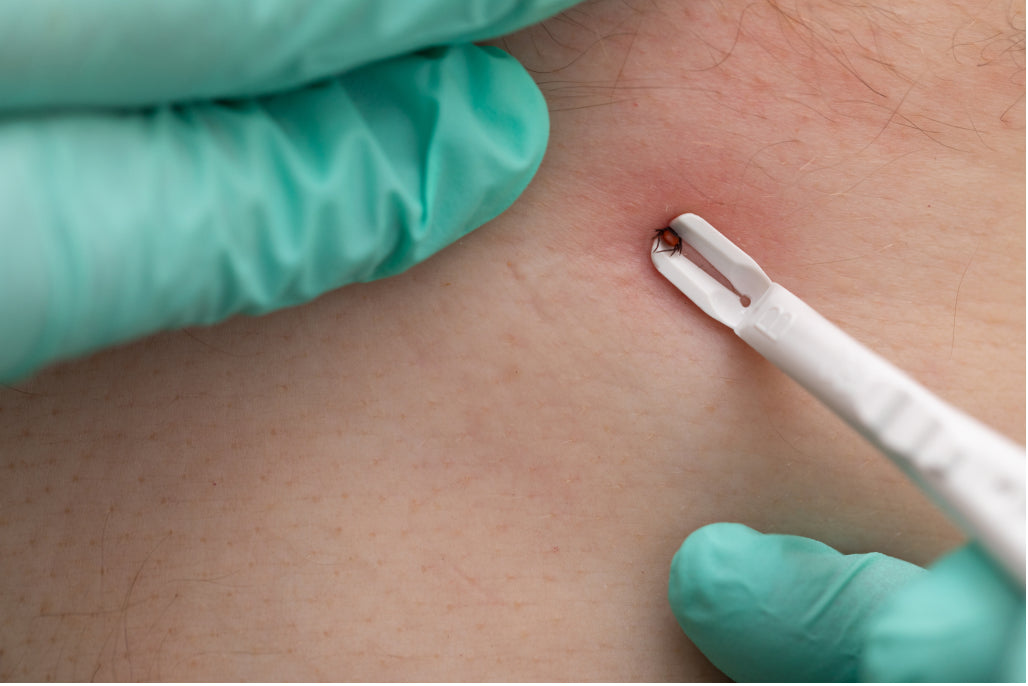Ticks are more than just a nuisance. They can be downright dangerous. That’s why each year in May, Lyme Disease Awareness Month is promoted. The campaign is aimed at raising awareness about the prevalence and impact of Lyme disease, a tick-borne illness with approximately a half a million cases reported each year in the U.S.
One of those cases comes from a member of our Wonder Pack who lives in New York. She shares her story:
“I’m well aware, and want to make sure that everyone is, too. Just about every member of my family has had Lyme disease within the past two decades. The journey from diagnosis to treatment has been a troubling one. None of us ever found a tick on ourselves. My husband, for example, was ‘lucky’ when he got the tell-tale sign of the bullseye rash. He was treated right away with antibiotics. We call him lucky because the rest of us had evasive symptoms, going undiagnosed for some time.
Decades ago, my mom went from doctor to doctor, trying to figure out her mysterious symptoms. Neurologists and other specialists could not figure out why her eyesight was going blurry. While the tests from her New York labs came back negative for Lyme and other tick-borne illnesses, finally a lab in California did indeed confirm Lyme. We found her diagnosis surprising; she wasn’t an outdoorsy person, and we joked that unless Bloomingdales was harboring ticks, we had no idea how or when she was infected. We hate to blame the family dog (whom we unconditionally loved), but this was probably the case. Her treatment went smoothly.
My experience with Lyme was also less than straightforward. A medley of strange symptoms, my doctor said that I probably had rheumatoid arthritis. And that the vertigo was just that, vertigo. And the other symptoms, well? I went to a Lyme-literate specialist, who diagnosed me based on symptoms. He explained that Lyme isn’t black and white, and often doesn’t show up in bloodwork. Thankfully today, I’m functioning and well.”
Her story serves as a reminder of how important it is to understand the risks associated with tick bites – and how to protect yourself as well as your loved ones. In recent years, the incidence of tick-borne illnesses has been on the rise in the United States, so taking preventative measures and staying informed is key.
What is Lyme Disease?
Lyme disease is an infection caused by the bacterium Borrelia burgdorferi. It’s transmitted to humans through the bite of an infected tick, primarily the black-legged tick or deer tick. The disease is named after the town of Lyme, Connecticut, where it was first identified in 1975.
How does Lyme disease happen?
Ticks can become infected with the bacterium after feeding on infected animals such as mice and deer. When an infected tick bites a human, the bacterium can be transmitted into the bloodstream. Symptoms can appear anywhere from 3 to 30 days after you’ve been bitten.
Is Lyme the only disease to worry about with ticks?
Ticks can also carry a variety of other diseases in addition to Lyme Disease, including:
- Rocky Mountain spotted fever
- Anaplasmosis
- Babesiosis
- Colorado tick fever
- Powassan encephalitis
- Tularemia
- Ehrlichiosis
- Relapsing fever
A little more about ticks
Ticks are small, blood-sucking parasites that can be found in grassy and wooded areas. With temperatures rising, and with more milder winters, ticks can indeed live year-round, even in snowy regions. They can be difficult to spot, as they are very small and can attach to any part of the body.

Ticks nymphs are tiny, generally the size of a poppy seed.
Who's at risk for Lyme disease?
Just about anyone. Anyone who spends time outdoors, whether for work or leisure. Pets can bring the ticks into the home, too.
Lyme disease cases are being reported all over the United States. Some of the states with the highest confirmed cases include Pennsylvania, New Jersey, New York, Wisconsin, and Maine.
Signs and symptoms of Lyme Disease
The symptoms of Lyme disease can vary from person to person. Some common signs to look out for include any of the following:

A circular rash, also called a bullseye rash, is a tell tale sign of a tick bite from certain species of ticks.
- A circular rash that appears at the site of the tick bite, also called the bullseye rash
- Fever
- Fatigue
- Joint pain and swelling
- Headaches
- Muscle aches
- Swollen lymph nodes
Weeks to months after the bite, symptoms could include:
- Neurological symptoms, including inflammation of the nervous system (meningitis) and weakness and paralysis of the facial muscles (Bell palsy)
- Heart problems, including inflammation of the heart (myopericarditis) and problems with heart rate
- Eye problems, including inflammation (such as, red eye)
A few months to a few years after a bite, the following symptoms may include:
- Inflammation of the joints (arthritis)
- Neurological symptoms including numbness in the extremities, tingling and pain, and difficulties with speech, memory, and concentration
If left untreated, Lyme disease can lead to more serious symptoms such as heart palpitations, facial paralysis, and meningitis.
Prevention and treatment
While there’s no sure-fire way to 100% avoid getting bitten by a tick, there are prevention methods that can help with protection. When you’re outside, avoid wooded or brushy areas with high grass and leaf litter. Walk on the center of trails.

When spending time in areas of tall grasses or low bushes, it's smart to wear long pants and tuck them inside socks to prevent ticks from crawling up the leg.
The CDC suggests wearing long sleeves and pants, using insect repellent, and performing regular tick checks after spending time outdoors. Check your clothing and body for ticks. Shower soon after being outdoors. Wash clothing in hot water and tumble dry clothes in a dryer on high heat for 10 minutes, which should kill any ticks on clothing.
What to do if you find a tick attached to your skin

A pair of tweezers or a tick removal device should be used to remove an embedded tick.
If you do find a tick attached to your skin, it's important to remove it as soon as possible. Use tweezers or a special tick removal tweezer to grasp the tick as close to the skin as possible and pull it straight out. Do not twist or jerk the tick, as this can cause the mouthparts to break off and remain in the skin.
When in doubt, seek medical attention
If you develop symptoms of Lyme disease, it's important to seek medical attention as soon as possible. Early detection and treatment is important.
Tick-borne diseases such as Lyme disease are a serious health risk in the United States. By taking preventative measures and being aware of the signs and symptoms of Lyme disease, you’re doing your best to protect yourself and your family from this potentially debilitating illness. Remember to always be vigilant when spending time outdoors, and seek medical attention if you suspect you may have been bitten by a tick.
Wishing you a tick-free summer.




